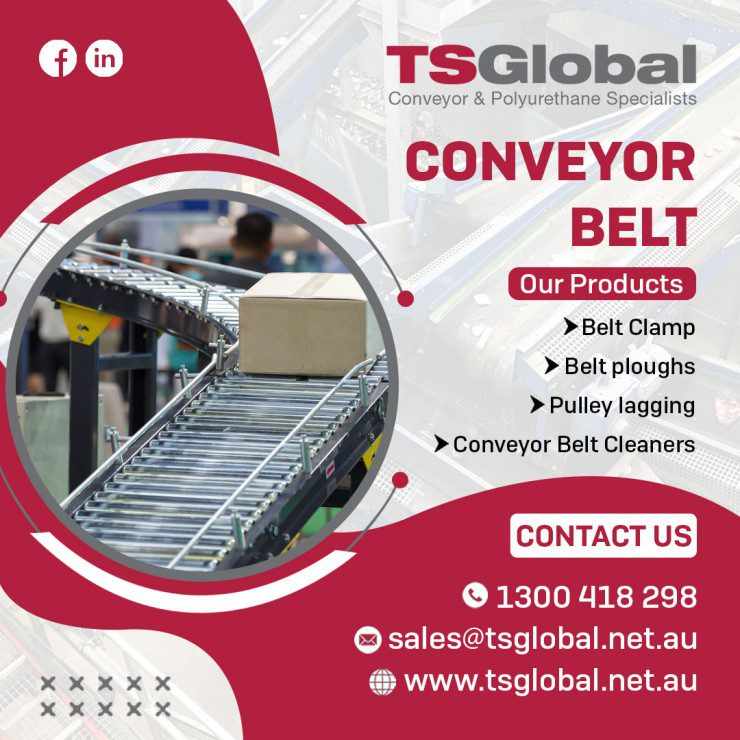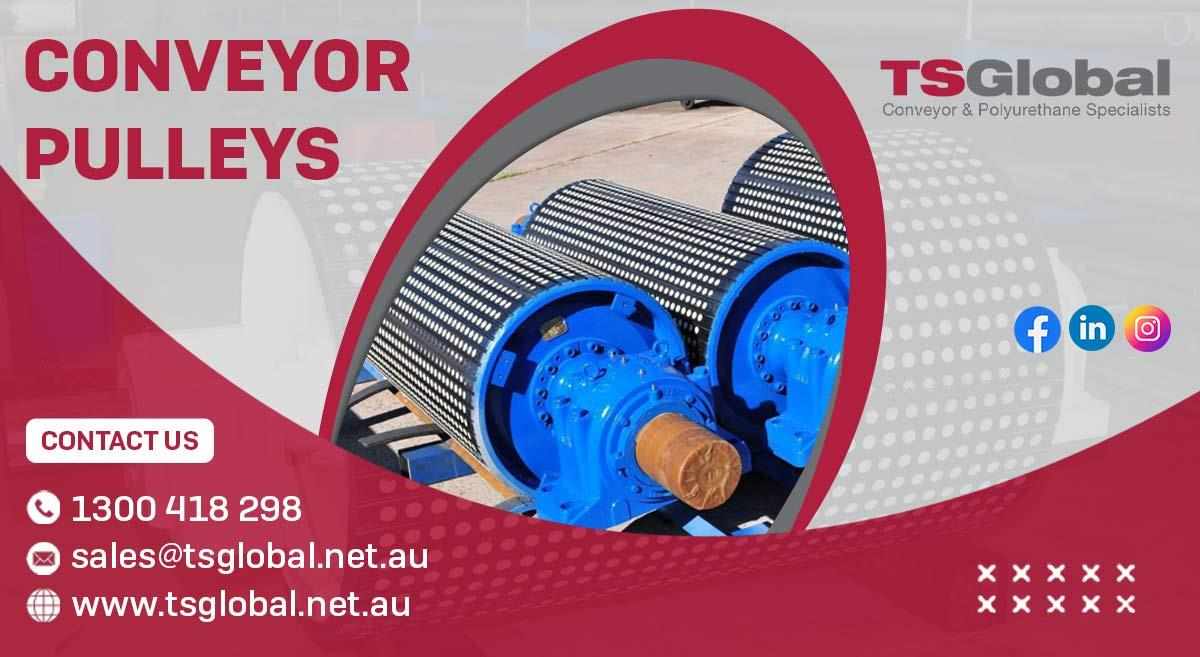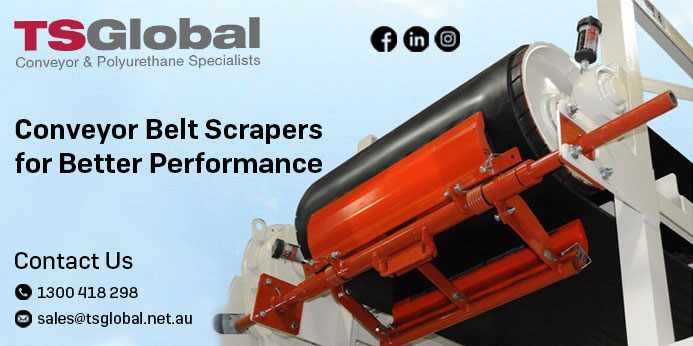In the world of industrial operations, conveyor belts are essential for efficient material handling. A critical component of these systems is the pulley. Understanding the different types of pulleys used on conveyor belts can help optimize performance, reduce maintenance costs, and improve safety. At TS Global, we specialize in providing high-quality pulleys tailored to meet the diverse needs of various industries. Below, we delve into the different types of pulleys you might encounter on a conveyor belt system.
Understanding Conveyor Pulleys
Conveyor pulleys are cylindrical devices that drive and support conveyor belts. They come in various sizes and types, each designed for specific functions within the conveyor system. Pulleys play a crucial role in the efficient operation of conveyor belts, ensuring smooth and reliable material transport.
1. Pulley lagging
Pulley lagging are the main component responsible for moving the conveyor belt. They are attached to motors and provide the necessary torque to drive the belt forward. These pulleys are typically larger and more robust than other pulleys in the system to withstand the high forces exerted on them.
Key Features of Drive Pulleys
High Torque Capacity: Designed to handle the power required to move the belt.
Durable Construction: Made from materials like steel or cast iron to ensure longevity.
Lagging Options: Often covered with lagging (a layer of material) to increase friction between the pulley and the belt, reducing slippage.
2. Tail Pulleys
Tail pulleys are located at the opposite end of the conveyor system from the drive pulley. Their primary function is to provide tension and guide the belt back towards the drive pulley. Tail pulleys also help in maintaining the alignment of the belt.
Key Features of Tail Pulleys
Tension Adjustment: Can be adjusted to provide the correct tension for the conveyor belt.
Smooth Surface: Typically have a smooth surface to ensure the belt returns without any additional resistance.
Alignment Maintenance: Critical for maintaining the proper tracking of the belt.
3. Snub Pulleys
Snub pulleys are used to increase the contact area between the belt and the drive pulley. By wrapping the belt around a larger portion of the drive pulley, snub pulleys help increase friction, which reduces slippage and improves power transmission.
Key Features of Snub Pulleys
Increased Contact: Positioned close to the drive pulley to maximize belt contact.
Enhanced Grip: Helps in enhancing the grip on the belt, reducing the risk of slippage.
Supportive Role: Provides additional support to the belt and the drive pulley.
4. Conveyor V Plough
Conveyor V Plough is used to change the direction of the belt in a conveyor system. These pulleys can be positioned in various locations to guide the belt through complex system layouts.
Key Features of Bend Pulleys
Directional Change: Essential for changing the belt's direction without causing undue stress.
Versatile Placement: Can be used at multiple points in the conveyor system to achieve the desired belt path.
Smooth Operation: Ensures smooth transitions and reduces belt wear.
5. Take-Up Pulleys
Take-up pulleys are part of the take-up assembly, which adjusts the tension of the conveyor belt. Proper tension is crucial for the efficient operation and longevity of the belt.
Key Features of Take-Up Pulleys
Tension Control: Critical for maintaining the correct belt tension, preventing slippage, and reducing wear.
Automatic Adjustment: Can be part of an automatic tensioning system that adjusts belt tension as needed.
Preventive Maintenance: Helps in reducing the frequency of manual tension adjustments and maintenance.
6. Head Pulleys
Head pulleys are similar to drive pulleys but are typically located at the discharge end of the conveyor belt. They help in driving the belt and discharging materials at the end of the conveyor.
Key Features of Head Pulleys
Material Discharge: Positioned to facilitate the smooth discharge of materials.
High Durability: Designed to withstand the impact of material loading and unloading.
Enhanced Friction: Often equipped with lagging to improve grip and reduce slippage.
7. Wing Pulleys
Wing pulleys are designed to operate in harsh environments where material buildup on the pulley is a concern. Their unique winged structure allows debris to fall through the wings, preventing material accumulation.
Key Features of Wing Pulleys
Self-Cleaning Design: The winged structure ensures that debris does not build up on the pulley surface.
Reduced Maintenance: Minimizes the need for frequent cleaning and maintenance.
Durability: Constructed from robust materials to withstand harsh operating conditions.
TS Global's Expertise
At TS Global, we understand the complexities of conveyor systems and offer a comprehensive range of pulleys to meet your specific needs. Our products are designed for durability, efficiency, and ease of maintenance, ensuring your conveyor system operates at peak performance. We provide expert guidance to help you select the right pulley for your application and offer ongoing support to ensure your system's longevity.
Conclusion
Understanding the different types of pulleys on a conveyor belt and their specific functions is essential for maintaining an efficient and reliable conveyor system. Whether you need drive pulleys, tail pulleys, or specialized options like wing or spiral pulleys, choosing the right components can significantly enhance your system's performance. TS Global is committed to providing high-quality pulley solutions tailored to your needs, ensuring your operations run smoothly and efficiently.

















.jpeg)


Write a comment ...